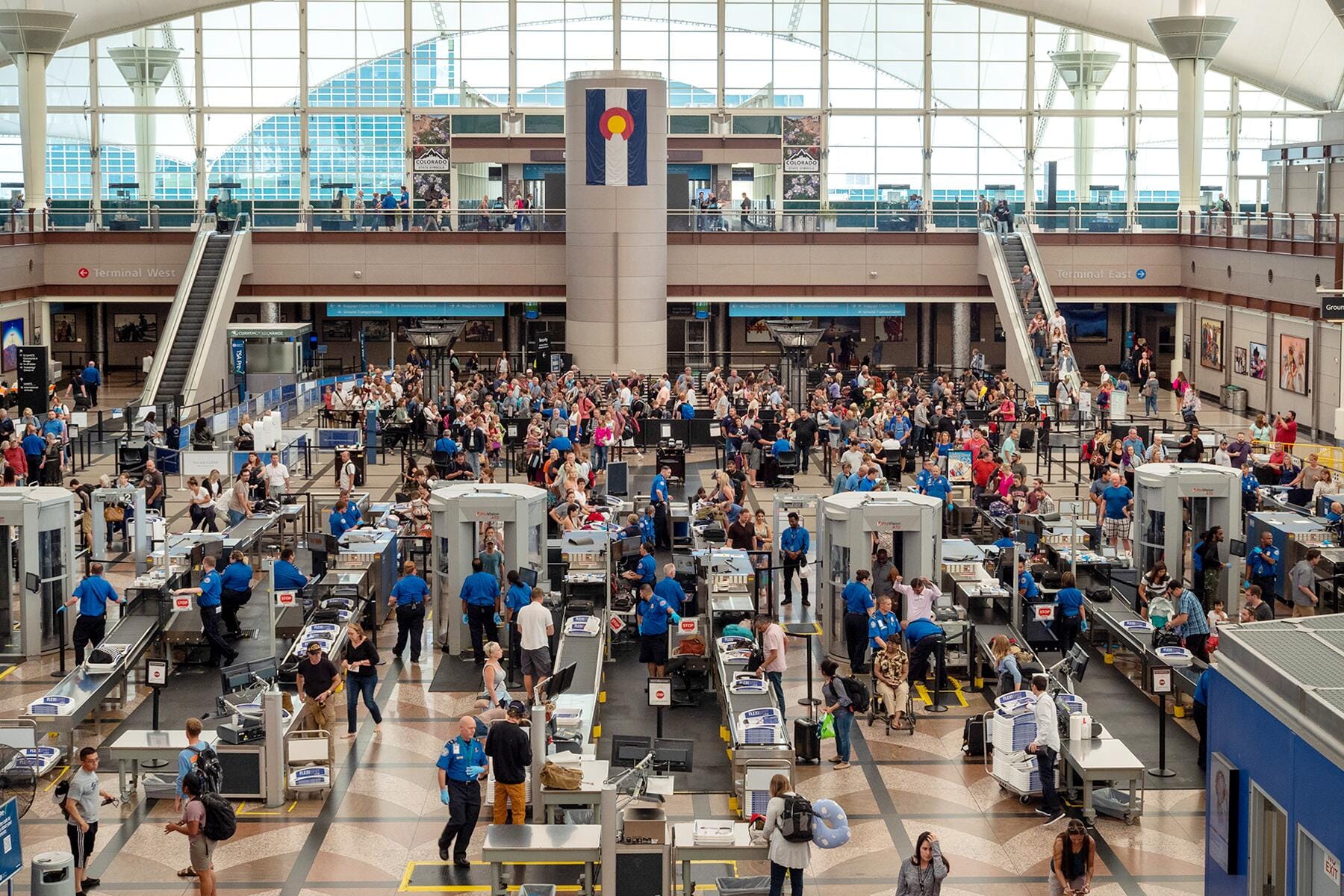But that will change soon. Residents will be able to fly out of their home state—as long as they’re flying to this one destination.
If you’re a resident of the state of Delaware over the last five years, any plans you had to hop on a plane most likely involved crossing state lines. Back in 2015, Frontier Airlines stopped its flights to Delaware, making Delaware the only U.S. state without commercial air service. But it was recently announced that Frontier will be returning to The First State. Starting May 14th, Delawareans will be able to head to New Castle Airport and fly the low-cost carrier to Orlando.
Though The Wall Street Journal noted that Frontier was the U.S. airline with the worst record for flight delays in 2019, the low cost of flights and regular schedule (flights will run Tuesdays, Thursdays, and Sundays) may help bring more commercial flights to Delaware airports.
There’s a Disparity in Who Can Access Airports in the U.S.
It’s not just the citizens of Delaware that have had challenges with access to commercial air travel. As a recent study from Upgraded Points shows, easy access to airports is an issue for Americans from sea to shining sea.
The study, which looked at U.S. cities with at least 50,000 residents, found that many Americans have to undertake long drive-times to their closest airports. For 45% of cities, the closest large hub was more than 75 miles away, for an average of three and a half hours of driving time. And, nearly 18% percent of the landmass in the contiguous U.S. is at least 100 miles away from the nearest airport. All of this is difficult enough if you’re driving yourself, but access becomes even more limited for people who don’t have access to a private vehicle.
Recommended Fodor’s Video
Of the cities surveyed, Victoria, Texas was the city farthest from its nearest airport (Corpus Christi International Airport) at 97 miles. Even in California, which plays host to a number of major airports, including Los Angeles International Airport and San Francisco International Airport, there are still a number of smaller, more remote towns that were anywhere from 26 to 50 miles away from the closest airport.
And while nearly 75% of the cities were just 25 miles away or closer to their nearest airport, the issue of whether or not the airport is a decent sized hub greatly impacts the overall expediency of your air travel experience.
One of the downsides of not being able to easily access a bigger airport is the cost of flights. For example, you’ll tend to pay a little more to fly out of Hollywood Burbank Airport versus Los Angeles International Airport. (The upside, though, is that you’re flying out of Fodor’s Travel’s favorite airport of 2019.) And, if you can’t easily access a bigger hub you’re not going to have as many options as far as destinations go. So not only will you be spending more time en route to the airport itself, you’re more likely to require a connecting flight, meaning more time spent on the air travel portion of your journey.
Unfortunately, the various challenges with regard to access to airports are part of a troubling trend. The study notes that the number of “active public airports” has been on the decline for the last 10 years, especially for small cities. Small cities that depend on smaller airports that in turn depend on federal funding, but that funding has faced proposed cuts. Indeed, the sorry state of the United States’ infrastructure appears to be the biggest contributing factor to challenges with access to air travel and travel in general.



